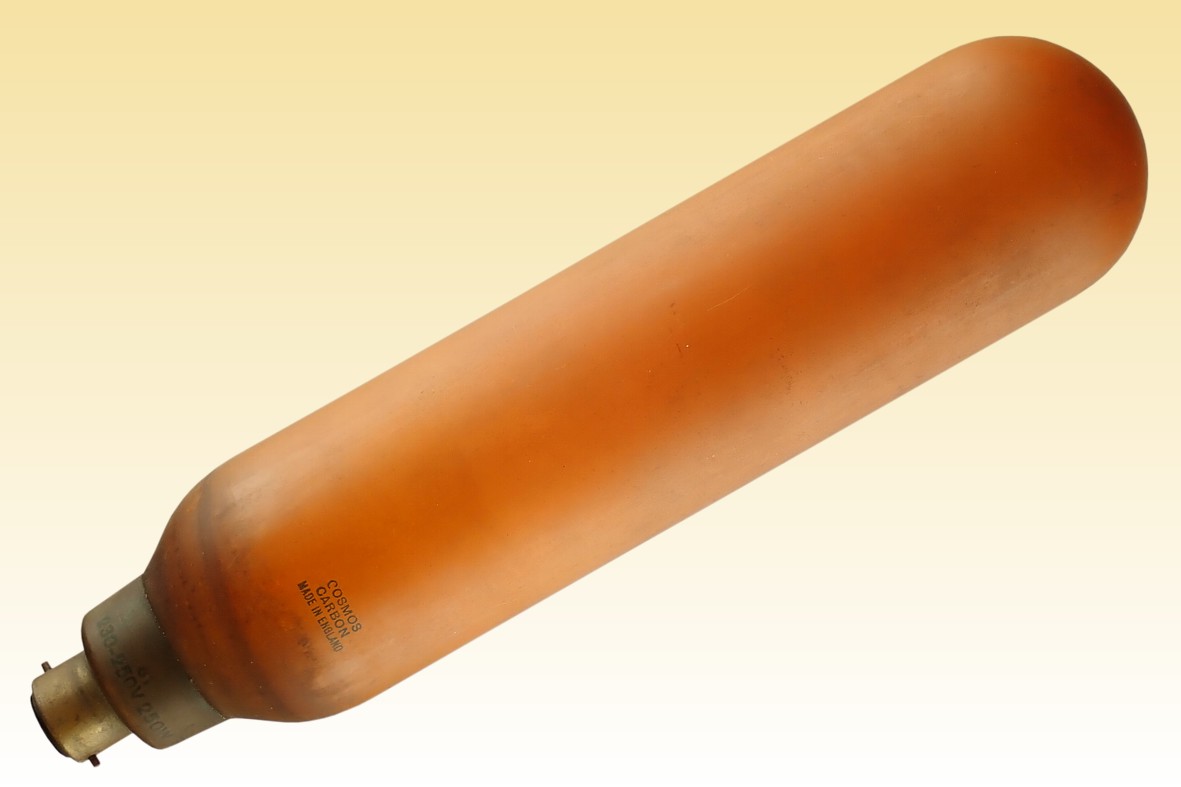
|
Robertson Infrared Carbon Radiator |

One of the earliest applications of heat lamps was pioneered by General Electric of USA in 1893, which introduced the first domestic electric fire. It was engineered around what later became more commonly known as the 'Dowsing' or 'Sausage' lamp featured on this page. H.J. Dowsing was a British pioneer who established the Dowsing Radiant Heat Company to capitalise on the advantages of these lamps, and became so prolific in selling domestic heating apparatus that the lamps soon became known as Dowsing lamps.
It comprises two long hairpin-shaped carbon filaments, supported by wire loops attached to a central glass stem. See X-Ray - the filament itself is not visible due to its low absorption. It was standard practice to connect the filaments in parallel for 100-130V mains and in series for 200-260V. There were clearly large tolerances - this example drawing 335W despite its 250W rating. The earliest lamps were clear, then shifting to a frosted bulb to reduce glare. This later model features a reddish iron oxide coating to create an atmosphere of cosiness and warmth similar to a coal fire.
After the 1905 invention of chromel / nichrome, a nickel-chromium alloy which resists oxidation up to dull red heat, it became possible to simplify domestic heaters and they shifted to open resistance elements. However, replacment carbon heater lamps remained in production until the 1960s.




| Manufacturer: | The General Electric Company of England | |
| Lamp Power: | 335 Watts | |
| Lamp Voltage: | 230-250 Volts | |
| Lamp Current: | 1.40 Amperes | |
| Cap Type: | B22d/35x38 | Brass & Vitrite |
| Bulb Type: | T-57 | T-18 in eighths/inch |
| Bulb Finish: | Flame-tint | Soda-lime glass |
| Filament Type: | 2S-2 | Twin carbon hairpin |
| Atmosphere: | Vacuum | Red P getter |
| Luminous Flux: | 125 lumens | |
| Luminous Efficacy: | 0.37 lm/W | |
| Colour Temperature: | N/A | |
| Colour Rendering: | Ra 75 | |
| Chromaticity Co-ordinates: | CCx: 0.600 | CCy: 0.365 |
| Lifetime: | Approx. 1000 hours | |
| Burning Position: | Vertical | |
| Overall Length: | 285 mm | 111/2 inches |
| Light Centre Length: | 185 mm | 71/4 inches |
| Factory: | Hammersmith | England |
| Date of Manufacture: | 1940 September | Date Code 81 |
| Original Value: | £0 4s 3d | 1937 |

